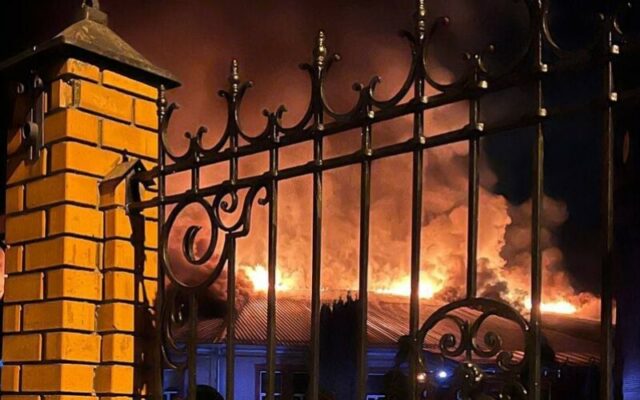Drone Strike on Russian Manufacturing Facility: A Wake-Up Call for Security Measures
A recent drone attack on a manufacturing facility in Korenevo, located in the Kursk region of Russia, has sent shockwaves through the country. This incident, marked by an explosive device dropped over a workshop that specializes in low-voltage equipment, is more than just a headline; it’s a stark reminder of the escalating drone warfare tactics that are becoming commonplace in today’s geopolitical landscape.
According to reports from Interfax, the resulting fire at the facility serves as a crucial point of concern for government and military officials alike. The Russian Ministry of Defense reported a total of 13 drone attacks occurring overnight, but thankfully, vigilant defenses intercepted all of them before they could inflict further damage. However, the question remains: how secure are our critical infrastructures in this new era of aerial threats?
Understanding the Nature of Modern Threats
This incident exposes not only the vulnerabilities of industrial facilities but also the urgent need for a systemic overhaul of security protocols. With drone technology rapidly advancing, it’s crucial to consider the implications that come with it. Here are some key points to ponder:
- Increasing Use of Drones: Drones are becoming more accessible, with commercial variants often found at retail stores. The global drone market is projected to reach billions in revenue, indicating a trend that cannot be ignored.
- Real-Life Examples: Look at recent instances in conflict zones where drones have revolutionized warfare. For instance, in the Nagorno-Karabakh conflict, drones were used with remarkable effectiveness, altering traditional military tactics.
- Preparedness and Response: The speed at which drones can be deployed raises alarms about how quickly defense systems can react. The recent Moscow airport incident, where commercial flights were temporarily halted due to drone sightings, showcases the potential havoc drones can wreak.
What This Means for Future Security Protocols
In light of these developments, what can be done to safeguard our critical infrastructures? Here are some insightful recommendations:
- Enhanced Surveillance Systems: Investing in advanced drone detection technologies can provide early warnings that could save lives and property.
- Regular Security Audits: Facilities must conduct regular assessments of their security frameworks, ensuring that they can withstand evolving threats.
- Collaboration with Experts: Engaging with security experts and defense contractors can offer invaluable insights on fortifying protection against aerial assaults.
Moreover, as we navigate through these uncertain times, it’s essential for authorities to engage in transparent communication with the public. Sharing data about security measures and protocols can foster trust and allow citizens to understand the steps being taken to keep them safe.
Conclusion: The Urgency for Change
This drone attack in Russia is not just a localized event; it mirrors a growing global concern that demands our attention. As aerial threats become increasingly sophisticated, we must adapt our security strategies accordingly. The stakes are high, and ensuring the safety of vital infrastructures requires commitment, innovation, and a community working together. Let this incident be a catalyst for change, inspiring action that bolsters our defenses against the ever-evolving threats facing us today.





